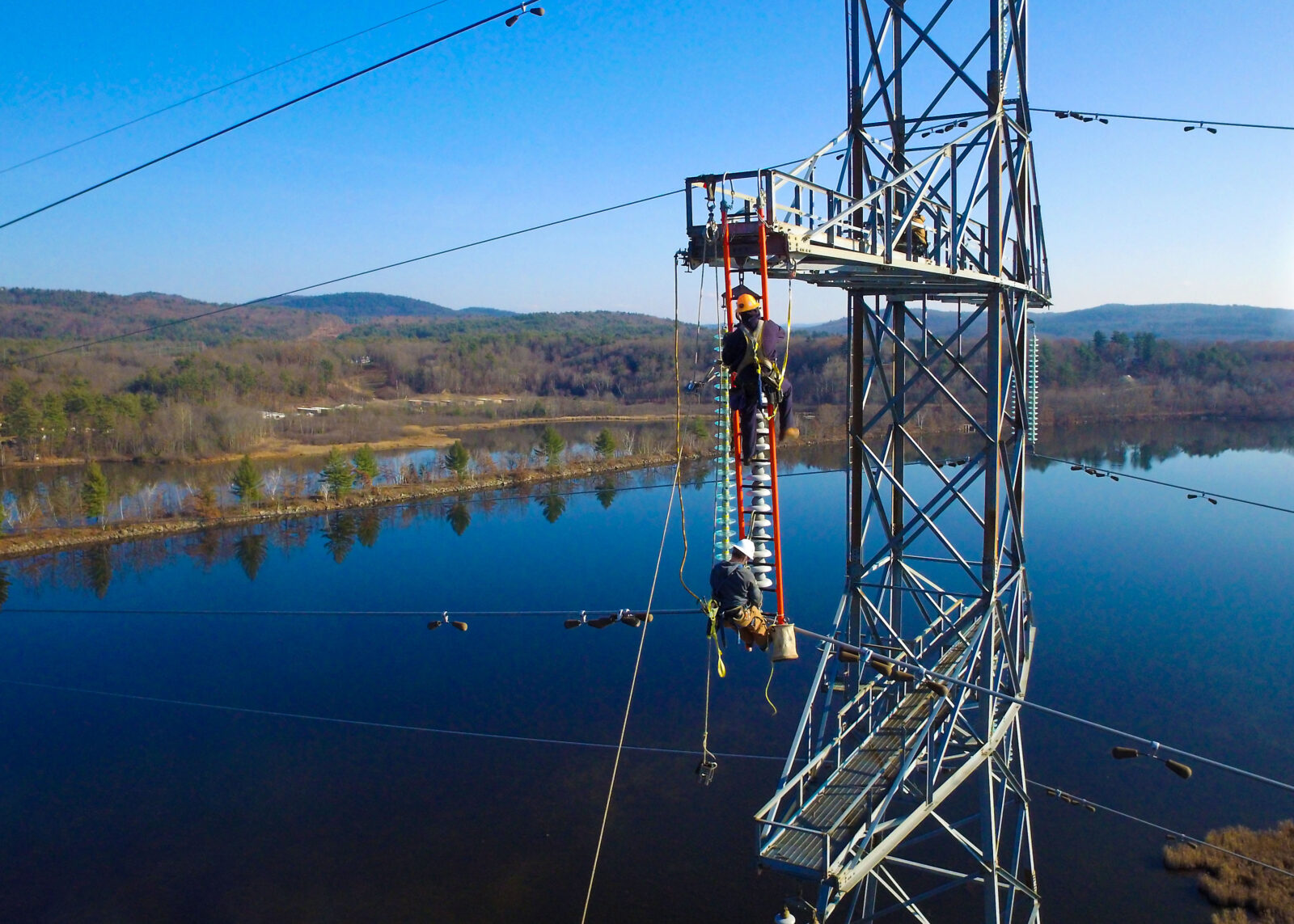
May 20, 2019 Using New Technology to Inspect Old Line
DRONES ALLOW FOR FAST, UP-CLOSE INSPECTION OF STRUCTURES, 115kV LINE FOR EVERSOURCE
Harlan Electric Company, a subsidiary of MYR Group Inc., performed the company’s first drone inspection of a transmission line in Connecticut in late January. General Foreman and certified drone pilot Brian Lovell led the effort to document and evaluate the structural integrity of the 115kV line, which was built in the 1930’s.
The careful inspection using an unmanned aerial vehicle (UAV) was completed prior to replacing structures and conductor along the 6.6-mile line, which serves as an interconnect between two substations in western Connecticut.
Traditionally during the pre-construction phase, construction managers, general foremen and/or superintendents will spend days, even weeks examining each structure and the conductor along the line. They rely on field glasses and their experience to gauge the risk of structure failure during transfer and conductor pulling operations.
This can be a difficult, tedious and time-consuming process, especially in hilly or boggy terrain. Conducting surveys from the ground also limits the line worker’s ability to see the top sections of the wire and structure. Helicopters can provide that bird’s eye view but are limited to how close they can get and come with their own safety risks.
After an initial inspection is complete, linemen and bucket trucks are brought to structures deemed to have the highest risk of failure for further review, which usually means entering energized zones.
In Connecticut, the two-man drone crew was able to get a close, top to bottom look at the infrastructure, without having to hike or drive to each structure. They looked for weak spots such as damaged splices, rotten wood and wire strand damage associated with lightning strikes. A digital record of the inspection was created in the form of high-resolution photos.
The images were organized, reviewed and delivered to the client, Eversource Energy. After completing the inspection, Lovell is convinced drones are the way to go when it comes to thoroughly documenting a line prior to construction.
“THEY DEFINITELY HAVE THE POTENTIAL TO REDUCE WORKER EXPOSURE. I CAN LAUNCH A DRONE IN MINUTES AND GET SOME VERY DETAILED SHOTS OF A STRUCTURE, UP TO A MILE AWAY IF THE POLE IS WITHIN LINE OF SIGHT.” – Brian Lovell, General Foreman and certified drone pilot, Harlan Electric